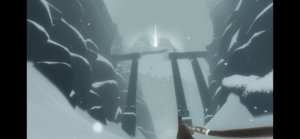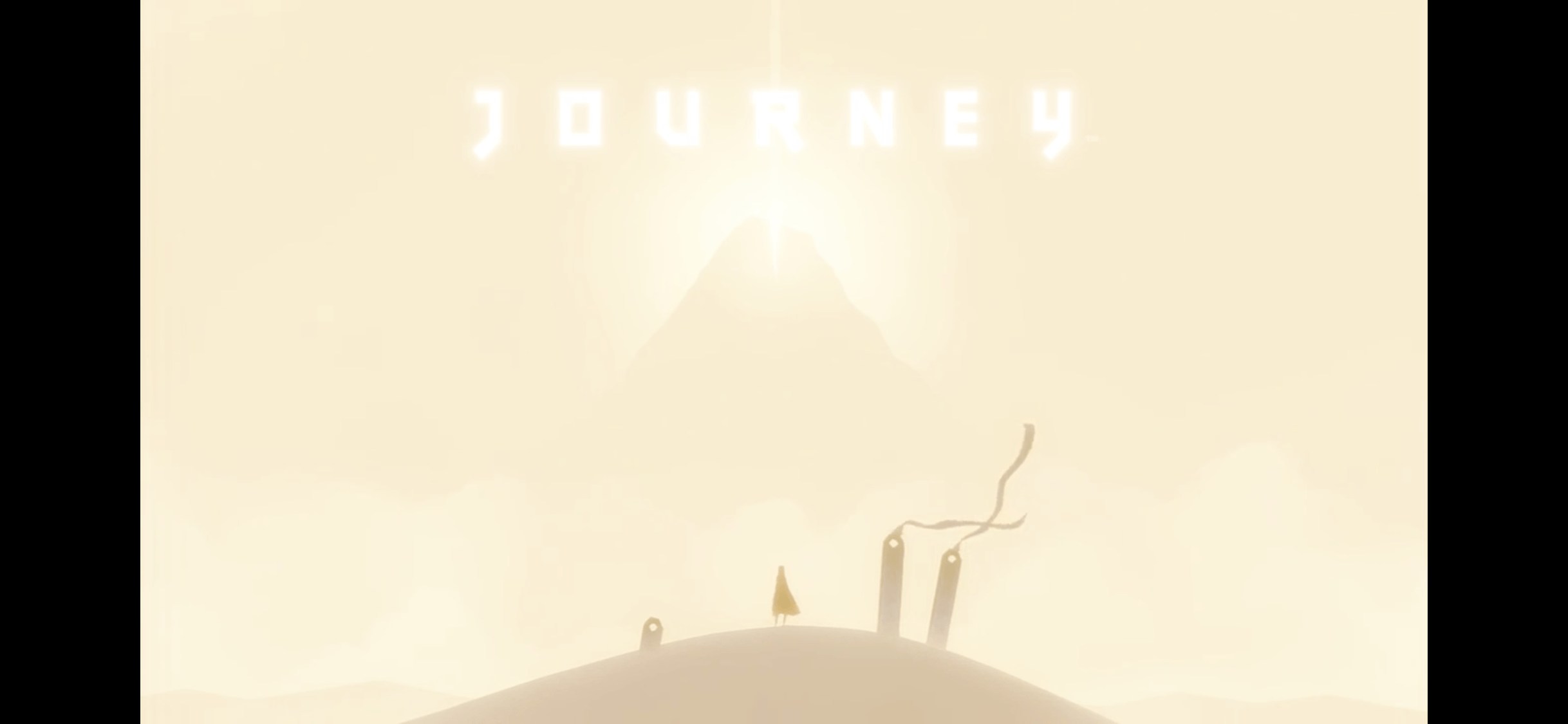Introduction
Journey is a walking simulator game created by Thatgamecompany and Santa Monica Studio. It is available on a variety of platforms such as iOS, PC, and PlayStation.
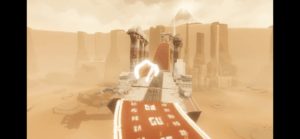
Target Audience
Journey is able to appeal to a wide audience. It has simple controls and can be completed in a relatively short amount of time. Given the game’s heavy focus on art (graphics, music, design), the game could be specifically targeted towards young adults who typically do not play video games but enjoy stories and artwork. However, other audiences are also able to enjoy the game since the game is so accessible.
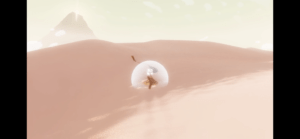
Formal Elements
Players: The game can be played individually, or with a companion. I played it individually, so it was a single player v. game experience.
Objectives: The objective of the game is to progress through “levels”, where the character reaches a stone object at the end of each level. At the end of the game, the player reaches the top of a mountain, which is the ultimate objective.
Outcomes: The game has an overarching storyline, so there is only one possible outcome in the game where the player reaches to top of the mountain at the end.
Procedures: The player is able to move around a desert terrain and collect white symbols from red cloth objects around the terrain. There are controls which allow the player to jump, move around, slide, make a sound, and to fly around temporarily depending on the amount of white symbols collected. The game has several “levels” where the player ends up at a stone object at the end of each level. There is usually a cutscene between the “levels” which add to the story before the player moves on to the next “level”.
Rules: The player must use the controls they are provided to navigate the terrain, making progress while traveling through the levels.
Boundaries: There are no clear boundaries in the terrain, but there are landmarks and objects which help guide the player along the path for to continue the story.
Conflict: There was not too much conflict in the game given that the player never “loses lives”. However, during some parts of the game, there are monster-like creatures which the player is encouraged to avoid. Getting into contact with the monsters shortens the player’s scarf, but it ultimately does not affect the story progression
Resources: The player can collect white symbols which are necessary for the player to fly. The player is also able to make sounds which are necessary for some actions within the game.
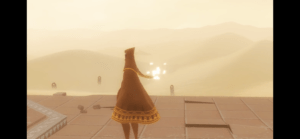
Game Architecture
Journey incorporated both loops and arcs. At the beginning of the game, the player is encouraged to learn the controls which the player is encouraged to repeat throughout the game. The “levels” in the game also act as a type of interaction loop. However, the interaction arcs were more prominent. Journey featured many beautiful cutscenes, and the entire game had a cinematic feel which felt like it was meant to deliver a story.
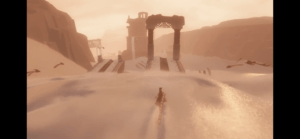
Type of Fun
The main type of fun in this game is discovery. Players can explore a beautiful landscape and interact with objects. Through playing the game, the player learns about how to use the controls and uncovers new pieces of what is happening around them. The game also features narrative as a type of fun because players can build a story as they explore they game.
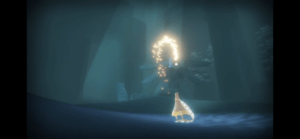
Success and Failures
Success: I thought that this game was beautifully designed! The artwork fit into an overall adventurous, zen-like, mysterious, and exciting theme. Everything from the character design, landscape design, music, story, and controls fit together in a way that seemed so simple. The game was able to deliver a smooth experience, all without using a single word.
Failures: Given that there were no words used in the game, it was somewhat confusing for me to initially learn the controls. There were also times where I wasn’t really sure what the next step to do was, or times when I needed to start over when tackling an obstacle.

Changes
I would change the game by allowing the player to have more choices regarding the direction of the story. As of now, the game has a linear storyline with only one ending. It would be interesting if there could be multiple paths that could lead to different endings. This could also help with making the game more replay-able.
